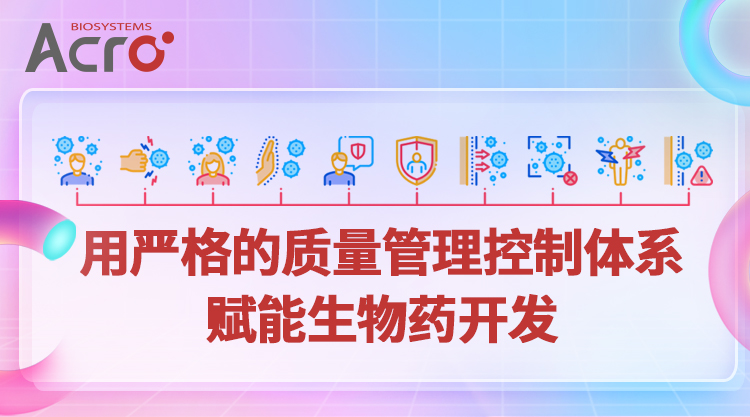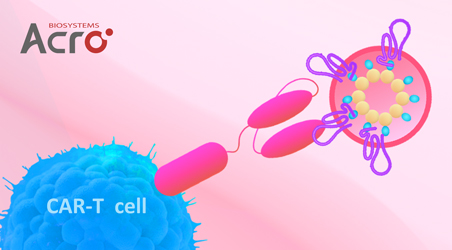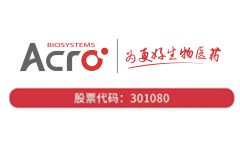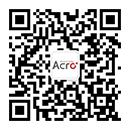分子别名(Synonym)
PDGF-BB,PDGF-B,FLJ12858,PDGF2,SIS,SSV,c-sis
表达区间及表达系统(Source)
Human PDGF-BB, premium grade (PDB-H4112) is expressed from E. coli cells. It contains AA Ser 82 - Thr 190 (Accession # P01127-1).
Predicted N-terminus: Met
It is produced under our rigorous quality control system that incorporates a comprehensive set of tests including sterility and endotoxin tests. Product performance is carefully validated and tested for compatibility for cell culture use or any other applications in the early preclinical stage. When ready to transition into later clinical phases, we also offer a custom GMP protein service that tailors to your needs. We will work with you to customize and develop a GMP-grade product in accordance with your requests that also meets the requirements for raw and ancillary materials use in cell manufacturing of cell-based therapies.
Request for sequence
蛋白结构(Molecular Characterization)

Human PDGF-BB, premium grade is a disulfide-linked homodimeric polypeptide chain containing 2×109 amino acids, and has a calculated MW of 12.4 kDa. The protein migrates as 13 kDa±3 kDa when calibrated against Star Ribbon Pre-stained Protein Marker under reducing (R) condition (SDS-PAGE).
内毒素(Endotoxin)
Less than 0.01 EU per μg by the LAL method.
宿主蛋白残留(Host Cell Protein)
<0.5 ng/µg of protein tested by ELISA.
宿主核酸残留(Host Cell DNA)
<0.02 ng/μg of protein tested by qPCR.
无菌(Sterility)
The sterility testing was performed by membrane filtration method.
支原体(Mycoplasma)
Negative.
纯度(Purity)
>95% as determined by SDS-PAGE.
制剂(Formulation)
Lyophilized from 0.22 μm filtered solution in 20 mM Citric acid - Sodium Citrate, pH3.0 with trehalose as protectant.
Contact us for customized product form or formulation.
重构方法(Reconstitution)
Please see Certificate of Analysis for specific instructions.
For best performance, we strongly recommend you to follow the reconstitution protocol provided in the CoA.
存储(Storage)
For long term storage, the product should be stored at lyophilized state at -20°C or lower.
Please avoid repeated freeze-thaw cycles.
This product is stable after storage at:
- -20°C to -70°C for 24 months in lyophilized state;
- -70°C for 3 months under sterile conditions after reconstitution.
电泳(SDS-PAGE)
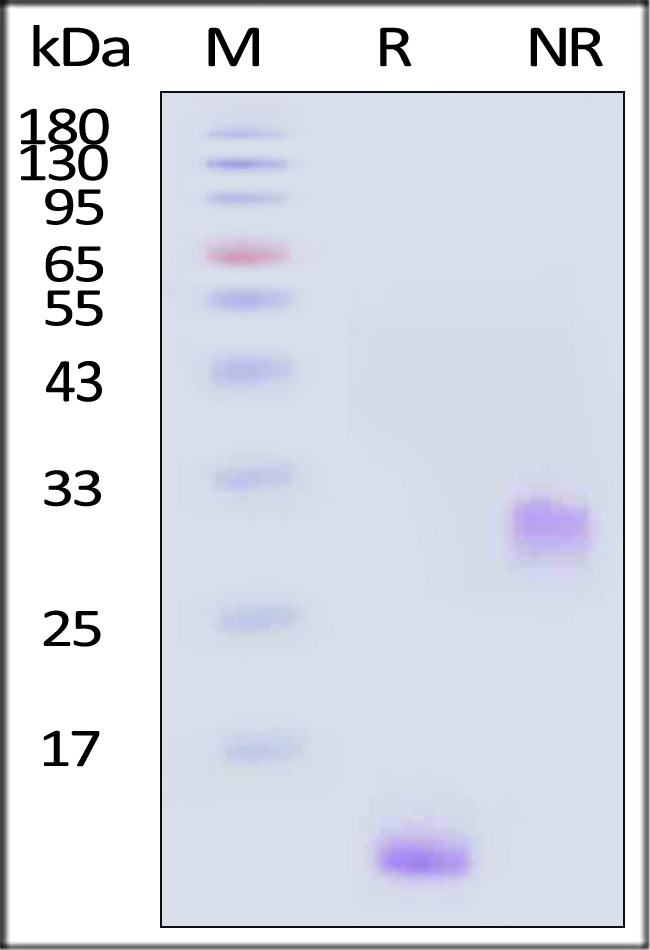
Human PDGF-BB, premium grade on SDS-PAGE under reducing (R) and non-reducing (NR) conditions. The gel was stained with Coomassie Blue. The purity of the protein is greater than 95% (With Star Ribbon Pre-stained Protein Marker).
活性(Bioactivity)-Bioactivity CELL BASE
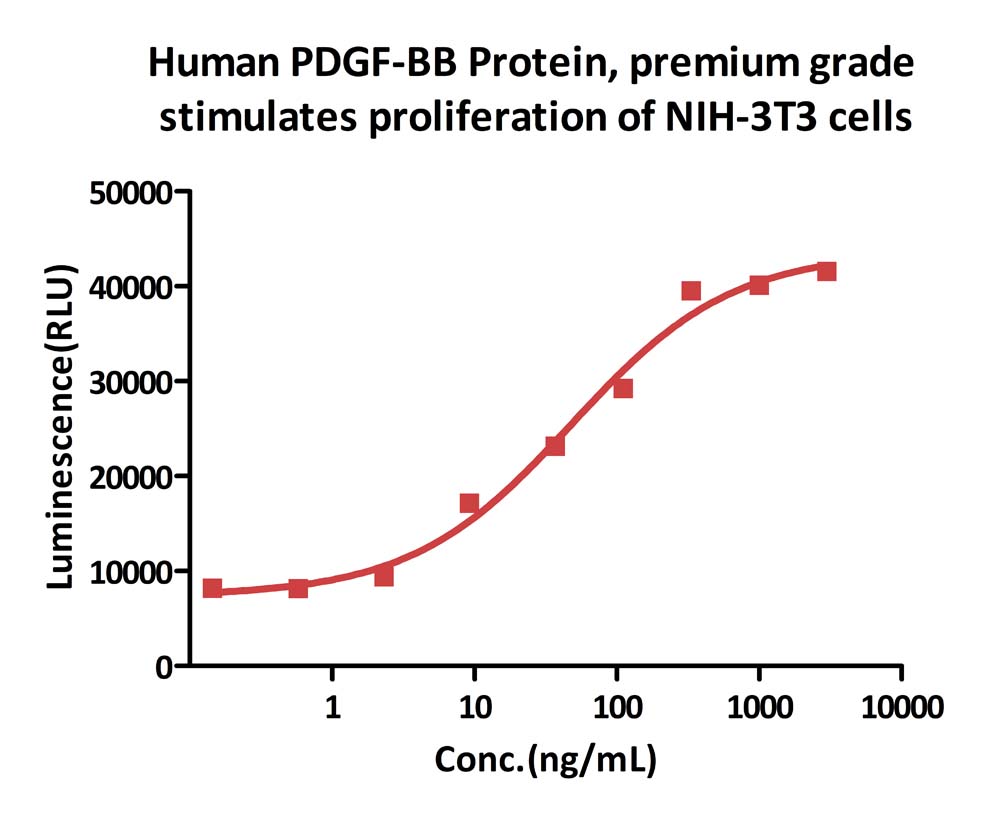
Human PDGF-BB, premium grade (Cat. No. PDB-H4112) stimulates proliferation of NIH/3T3 cells. The specific activity of Human PDGF-BB, premium grade is >5.00 x 10^5 IU/mg, which is calibrated against human PDGF-BB WHO International Standard (NIBSC code: 94/728) (QC tested).
Protocol
活性(Bioactivity)-ELISA
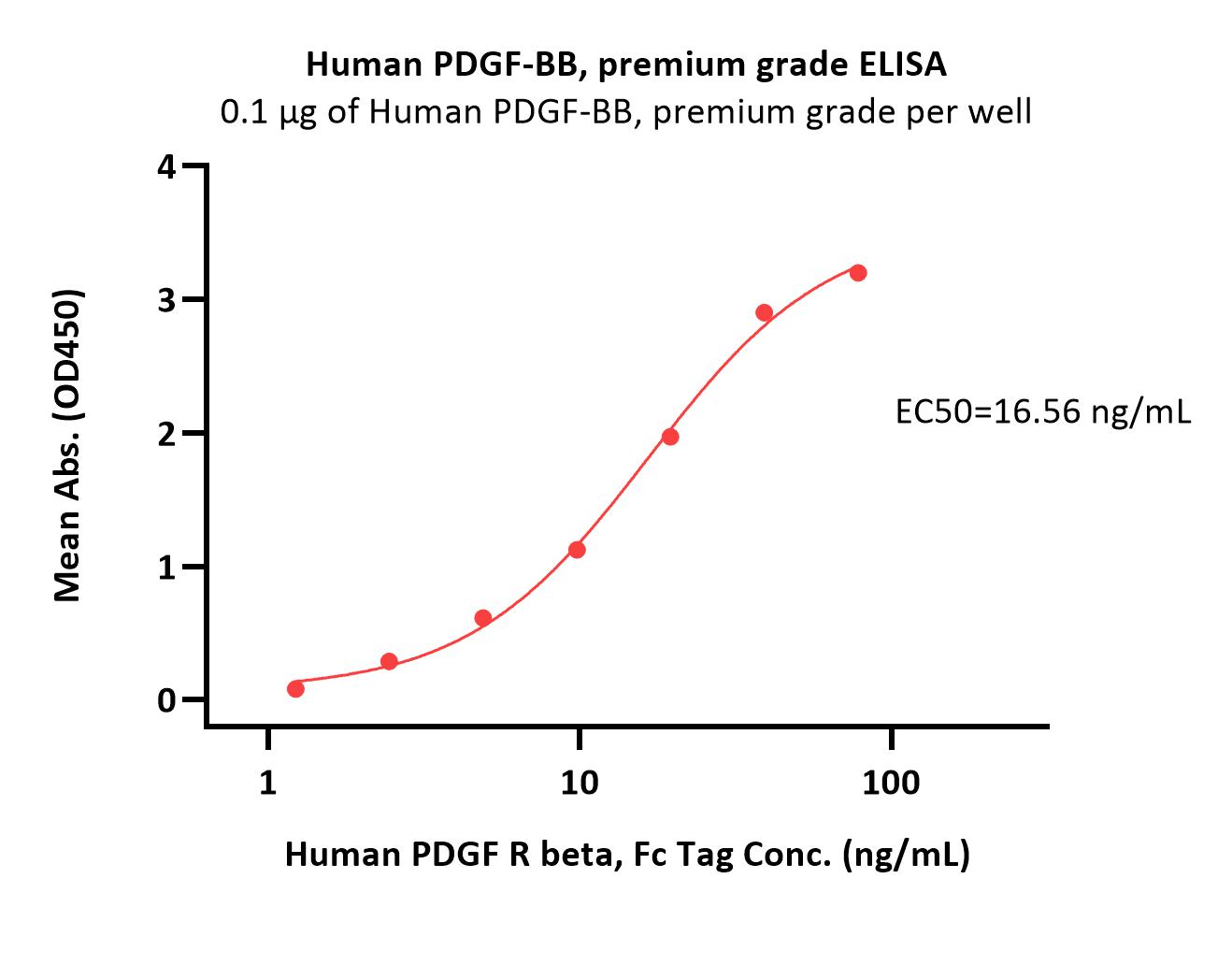
Immobilized Human PDGF-BB, premium grade (Cat. No. PDB-H4112) at 1 μg/mL (100 μL/well) can bind Human PDGF R beta, Fc Tag (Cat. No. PDB-H5259) with a linear range of 1-39 ng/mL (QC tested).
Protocol
背景(Background)
PDGFs are mitogenic during early developmental stages, driving the proliferation of undifferentiated mesenchyme and some progenitor populations. During later maturation stages, PDGF signalling has been implicated in tissue remodelling and cellular differentiation, and in inductive events involved in patterning and morphogenesis. In addition to driving mesenchymal proliferation, PDGFs have been shown to direct the migration, differentiation and function of a variety of specialised mesenchymal and migratory cell types, both during development and in the adult animal. Other growth factors in this family include vascular endothelial growth factors B and C (VEGF-B, VEGF-C)which are active in angiogenesis and endothelial cell growth, and placenta growth factor (PlGF) which is also active in angiogenesis. PDGF plays a role in embryonic development, cell proliferation, cell migration, and angiogenesis. PDGF is a required element in cellular division for fibroblast, a type of connective tissue cell. PDGF is also known to maintain proliferation of oligodendrocyte progenitor cells. Platelet-derived growth factor subunit B is also known as PDGFB, FLJ12858, PDGF2, SIS, SSV, c-sis, is a member of the platelet-derived growth factor family. PDGFB can exist either as a homodimer (PDGF-BB) or as a heterodimer with the platelet-derived growth factor alpha polypeptide (PDGF-AB), where the dimers are connected by disulfide bonds. Mutations in this gene are associated with meningioma.



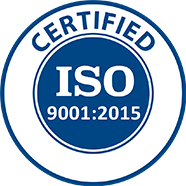
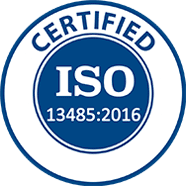
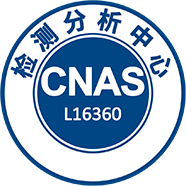
















































 膜杰作
膜杰作 Star Staining
Star Staining
